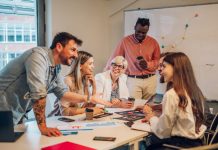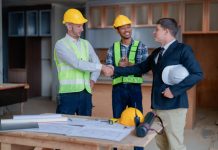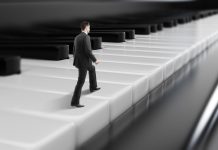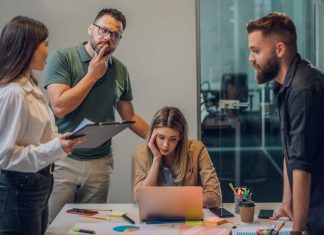Apple Park opens in a few weeks time. The new headquarters of one of the world’s most innovative companies, referred to by many as “spaceship campus” due to its flying saucer-like design, was one of the final acts from Steve Jobs before he passed in 2011. The building is aimed at encouraging collaboration and will provide employees with more opportunities to run into each other and interact, reflective of Jobs’ decision in 2000 to scrap plans for three separate buildings at Pixar in favour of one vast atrium-type space. The “spaceship” will contain a lake, meadow and orchard within its inner ring, while also offering a 100,000 square foot fitness centRE and two miles of walking and running paths across the 175-acre site.
After considering the importance of the social environment for health and positive behaviour change last month, here we take a closer look at the physical environment. Leading companies around the world are waking up to the fact that the physical space matters more than ever. There is a growing realisation that the modern workplace is no longer just seen as the desk, but also, and probably more importantly, the area around it. The growing premium on creative work from the workforce at large requires a new type of environment, something alluded to when IDEO’s Tom Kelley observed that “when I see someone at their desk all day its suspicious how they pretend to work”.
Today’s workplace design goes beyond traditional conversations around open and closed plan layouts to incorporate aspects of biophilic design (research has shown that adding houseplants to an otherwise sparse office environment can increase well-being by 47%, increase creativity by 45% and increase productivity by 38%) better quality air and working options to combat sedentariasm. We are receiving increasing requests from our clients to move beyond a narrow view of health and wellbeing to reflecting on the daily employee experience, which naturally leads to a design thinking approach.
That daily experience for over 200 diverse innovators is the core concern for The Dock, Accenture’s new research and incubation hub in Dublin which is the company’s own frontier experiment on the future of the workplace. Conceptualised as a “living building” it is one of the most connected buildings in the world where over one million data points are generated each day, providing on-the-fly awareness of people activity and ideas to the whole building while feeding back usage data to the ongoing design of the building.
Employees are empowered to configure and reconfigure the space as they see fit depending on the project, using a mobile app to book rooms and change temperature or even find people and resources, useful when almost everything is on wheels. Julie Spillane, Director of The Dock notes that “We’ve been surprised at how quickly people adapt to experimental workspaces, and at the ability of our team to self-organise – I guess you could almost say we planned it.”
The thirst for experimentation and learning at Accenture was one of the points picked up by Jacob Morgan in his new book, The Employee Experience Advantage. Reviewing the employee experience of 252 organisations in the dimensions of culture, technology and the physical workspace, Morgan highlights different areas that show if an organisation has mastered their physical environment including company values being reflected in the physical space, employees having different space options available, and being able to bring in friends and visitors to an environment they are proud of.
So how would an organisation get started with improvements in the physical space? Different checklists and standards now exist which can drive change at multiple levels, from the cosmetic, say new office furniture or even rearranging existing content, to the bricks and mortar of a new building. And simply remembering that we are “flesh and bones” is key, as noted by Dr. Francesca Mastrogiacomi, head of learning design for Google’s Digital Academy in EMEA. She has her own checklist for the workspace that includes elements of “windows, fresh air, green space, daylight, plants, cozy areas, comfy corners, silent spaces, and noisy coffee corners” believing that the learning journey is improved when people move, stand up, get outside, walk and talk.
Within a reflection on our human nature, understanding current habits and the prevailing culture is also necessary. Replicating the experimental nature of the Dock wouldn’t work without the commitment (including getting out of the way) of company directors. As in successful attempts in behaviour change baby steps may still reap significant benefits.
One company who knows more than most about behaviour change is Alpha, the long-term innovation lab in Barcelona. Think Google’s “X” division. Alpha’s first “moonshot” process is in health and they are working with different partners, from London School of Economics to Massachusetts General Hospital to build tools to support sustainable behaviUor change.
My own team was interested in Alpha’s health and habits and wanted to examine further our initial impressions that their mobility during the day was minimal, enforced by an intensive small team start-up culture where people worked long hours and had food ordered in. The office overlooks Barcelona beach yet walking meetings along the Mediterranean rarely ever happened.
HR Director David Armengol examined current patterns by setting up a video camera and tracking movement over a number of days. Some of the insights were used in the design of a new space in Torre Diagonal Zero Zero, where the growing team is moving to this month (March 2017).
Armengol stated that “first of all, we were conscious of the need for more space and the new floor will give us double the square metres. We then thought about the flow of people during the working day and decided on simple features including the use of hot desking, lockers, and a larger kitchen and eating area. We were also keen to maintain a balance between visibility and privacy, whether for the individual or team meeting.” The scope of our work in examining habits and culture aims to leverage the increased comfort and suitability of the larger space so that actually leaving it, and getting outside, is a more natural proposition.
As we experience profound changes in the world of work and how it fits within our lives, emerging notions of space – supporting positive behaviour, health and wellness, dynamic interaction and providing options for different configurations – will be present in the leading organisations of the future, regardless of size or sector. Today, we can work from anywhere at any time yet the design of the physical space will play an increasingly important role in the future of work. 12,000 Apple employees who start to embark the spaceship in the coming weeks will be some of the first to see a compelling vision of that future.
Feature image: The new 175 acres Apple Park in Cupertino, one of the most energy-efficient buildings in the world. © Apple http://nr.apple.com/dE0c5p1G9O
About the Author
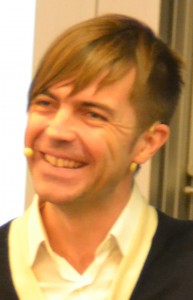 Founder of The Leadership Academy of Barcelona [LAB] and author of Sustaining Executive Performance (Pearson 2015) Dr. MacGregor has delivered over 1000 sessions the past 5 years in executive health and behavioUr change for clients including Telefónica, Danone, IESE, IMD, and the BBC. He holds a PhD in Engineering Design Management and has been a visiting researcher at Stanford and Carnegie-Mellon. His executive education teaching is informed by academic interest in sustainability and design and he is an article reviewer for, among others, Industry and Innovation, Journal of Engineering Design, and the International Journal of Design Creativity and Innovation.
Founder of The Leadership Academy of Barcelona [LAB] and author of Sustaining Executive Performance (Pearson 2015) Dr. MacGregor has delivered over 1000 sessions the past 5 years in executive health and behavioUr change for clients including Telefónica, Danone, IESE, IMD, and the BBC. He holds a PhD in Engineering Design Management and has been a visiting researcher at Stanford and Carnegie-Mellon. His executive education teaching is informed by academic interest in sustainability and design and he is an article reviewer for, among others, Industry and Innovation, Journal of Engineering Design, and the International Journal of Design Creativity and Innovation.




